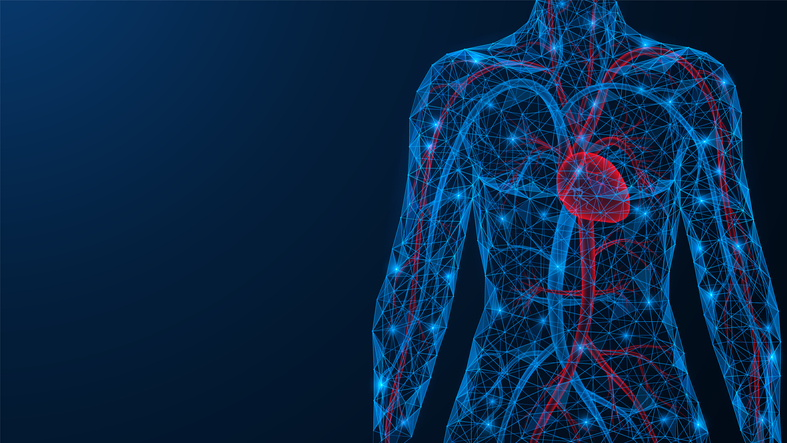Cardiac Effects
Benefits for the Heart
Renew™ ECP therapy provides significant cardiac benefits, supporting heart health and circulation.

After ECP treatment, 71 out of 101 patients showed improvement of ≥1 CCS angina class, and 33 patients improved by ≥2 CCS classes. Patients with ANOCA experienced reduced angina and improved physical capacity.
Reduced Preload:
Decreased ventricular stretching during diastole, easing the heart’s workload.
Lowered Myocardial Oxygen Demand:
Minimises the heart’s oxygen needs for optimal function.
Enhanced Coronary Blood Flow:
Increases blood flow to the heart muscle, improving myocardial perfusion.
Peripheral Effects
Benefits to the Blood Vessels
Renew™ ECP therapy enhances blood vessel health and improves peripheral circulation.
Promotes vasodilation and reduces vascular resistance.
Promotion of Angiogenesis:
Facilitates new blood vessel development, improving tissue perfusion.
Vasodilation:
Relaxes vascular smooth muscle, enhancing blood flow.
Enhanced Tissue Perfusion:
Improves blood flow to tissues and organs.

Proven Patient Benefits
Real Results: Proven Patient Outcomes
ECP therapy delivers real results, with proven improvements in patient health and quality of life.

Boosts energy levels and reduces fatigue.
Enhanced Activity:
Improves exercise tolerance and reduces myocardial ischemia in coronary artery disease.
Improved Cardiovascular Fitness:
Supports sustained physical activity without symptoms.
Long-Term Benefits:
Provides lasting benefits for up to two years, with repeatable therapy.
References
- Yang, D.Y. and G.F. Wu, Vasculoprotective properties of enhanced external counterpulsation for coronary artery disease: beyond the hemodynamics. Int J Cardiol, 2013. 166(1): p. 38-43.
- Loh, P.H., et al., Enhanced external counterpulsation in the treatment of chronic refractory angina: a long-term follow-up outcome from the International Enhanced External Counterpulsation Patient Registry. Clin Cardiol, 2008. 31(4): p. 159-64.
- Feldman, A.M., et al., Enhanced external counterpulsation improves exercise tolerance in patients with chronic heart failure. J Am Coll Cardiol, 2006. 48(6): p. 1198-205.
- Abbottsmith, C. W., et al., Enhanced external counterpulsation improves exercise duration and peak oxygen consumption in older patients with heart failure: a subgroup analysis of the PEECH trial. Congest Heart Fail, 2006. 12(6), p. 307-311.
- Martin, J.S., et al., Enhanced external counterpulsation improves peripheral artery function and glucose tolerance in subjects with abnormal glucose tolerance. J Appl Physiol (1985), 2012. 112(5): p. 868-76.
- Martin, J.S. and R.W. Braith, Anti-inflammatory effects of enhanced external counterpulsation in subjects with abnormal glucose tolerance. Appl Physiol Nutr Metab, 2012. 37(6): p. 1251-5.
- Campbell, A.R., et al., Enhanced external counterpulsation improves systolic blood pressure in patients with refractory angina. Am Heart J, 2008. 156(6): p. 1217-22.
- Casey, D.P., et al., Effects of enhanced external counterpulsation on arterial stiffness and myocardial oxygen demand in patients with chronic angina pectoris. Am J Cardiol, 2011. 107(10): p. 1466-72.
- Braverman, D.L., et al., The safety and efficacy of enhanced external counterpulsation as a treatment for angina in patients with aortic stenosis. Clin Cardiol, 2013. 36(2): p. 82-7.
- Lin, W., et al., Predictors of good functional outcome in counterpulsation-treated recent ischaemic stroke patients. BMJ Open, 2013. 3(6).
- Han, J.H., et al., Preliminary findings of external counterpulsation for ischemic stroke patient with large artery occlusive disease. Stroke, 2008. 39(4): p. 1340-3.
- Applebaum, R.M., et al., Sequential external counterpulsation increases cerebral and renal blood flow. Am Heart J, 1997. 133(6): p. 611-5.
- Werner, D., et al., Enhanced external counterpulsation: a new technique to augment renal function in liver cirrhosis. Nephrol Dial Transplant, 2005. 20(5): p. 920-6.
- Froschermaier, S.E., et al., Enhanced external counterpulsation as a new treatment modality for patients with erectile dysfunction. Urol Int, 1998. 61(3): p. 168-71.
- Lawson, W.E., et al., Effect of enhanced external counterpulsation on medically refractory angina patients with erectile dysfunction. Int J Clin Pract, 2007. 61(5): p. 757-62.
- Lawson, W.E., J.C. Hui, and P.F. Cohn, Long-term prognosis of patients with angina treated with enhanced external counterpulsation: five-year follow-up study. Clin Cardiol, 2000. 23(4): p. 254-8.
- Braith, R.W., et al., Enhanced external counterpulsation improves peripheral artery flow-mediated dilation in patients with chronic angina: a randomized sham-controlled study. Circulation, 2010. 122(16): p. 1612-20.
- Werner, D., et al., Pneumatic external counterpulsation: a new noninvasive method to improve organ perfusion. Am J Cardiol, 1999. 84(8): p. 950-2, A7-8.
